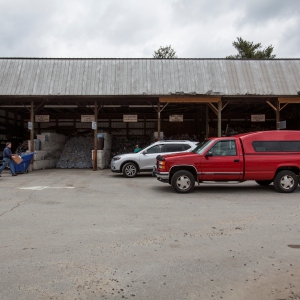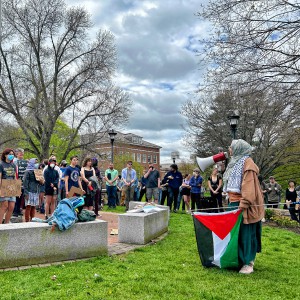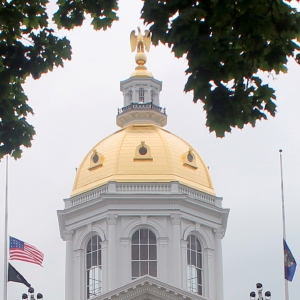Opinion: The Supreme Court delivers a TKO to organized labor
| Published: 06-19-2023 6:00 AM |
Jonathan P. Baird lives in Wilmot.
Any time the U.S. Supreme Court issues a decision now, I admit I shudder. Very occasionally they can surprise, like they did in the Alabama voting rights case, Allen v Milligan, this last week but typically decisions are predictable, especially when the Court is dealing with cases where they have a track record of hostility toward a certain group. Organized labor is such a group.
The Court always sides with employers against organized labor. In the case they just decided, Glacier Northwest v International Brotherhood of Teamsters Local Union 174, they did it again. The Court held that Glacier Northwest, a concrete company, could sue the Teamsters in state court for its loss of perishable concrete stemming from the workers’ strike.
In the Glacier situation, back in 2017, 85 truck drivers walked off the job and went on strike. At the time of the strike, 16 of the drivers had trucks filled with concrete that had not yet been delivered. The workers drove their trucks back to the company headquarters. They left the trucks running with their drums rotating so the cement would not harden and be ruined.
Glacier’s non-union workers did remove the wet concrete from the trucks before there was any significant damage to the trucks but the company lacked the personnel to deliver the concrete to customers. As a result, some of the wet concrete hardened and spoiled. The lawsuit Glacier filed in state court related to the spoiled concrete. They argued intentional destruction of company property by the union.
In an 8-1 decision authored by Justice Amy Coney Barrett, the Court found that the workers’ decision to strike after the concrete had been mixed and poured into the trucks meant they failed to take “reasonable precautions” to avoid foreseeable, aggravated and imminent harm to Glacier’s property. Barrett went on to conclude that the strike was not “arguably protected” under the National Labor Relations Act. She ruled that the company may pursue a lawsuit against the union in Washington state court before the National Labor Relations Board (also called the NLRB) decides whether this strike was protected by federal law.
The ruling is a significant loss for organized labor because it weakens the NLRB and because it makes it easier to sue unions for striking. The Glacier case opens the door to more cases being tried in state court rather than the NLRB, a result labor absolutely did not want.
I would acknowledge though that the ruling is narrower than it might have been. Many unions had worried the Court would much more drastically erode the right to strike. As labor organizer Jane McAlevey has pointed out, “What the Court did today, in essence, was simply say workers can’t call surprise strikes that cause property damage.”
Article continues after...
Yesterday's Most Read Articles
 Hopkinton tries to nab out-of-town trash bandits
Hopkinton tries to nab out-of-town trash bandits
 UNH faculty and students call on university police chief to resign following his alleged assault on a student
UNH faculty and students call on university police chief to resign following his alleged assault on a student
 Steeplegate project to reopen to public comment as developer seeks to reduce required parking
Steeplegate project to reopen to public comment as developer seeks to reduce required parking
 Monitor Way developer seeks $4.67 million from city for proposed new road
Monitor Way developer seeks $4.67 million from city for proposed new road
 Northeast Coffee Festival comes to Concord this weekend
Northeast Coffee Festival comes to Concord this weekend
 NH Senate panel frowns on bill to ease vehicle inspection requirements
NH Senate panel frowns on bill to ease vehicle inspection requirements
Based on their opinions, it would appear that the hard right bloc of the Court, Justices Thomas, Alito and Gorsuch, would like to replace long-established federal jurisdiction of strikes with state-level tort law. Stripping power away from the NLRB is part of their deconstructing the administrative state project. They are out to sideline the NLRB which for almost 100 years has been the federal agency charged with protecting workers’ rights to collective action and their right to strike.
Glacier may just be a speed bump in the anti-labor project. The hard right justices no doubt hope to realize their vision in a future case.
To appreciate what was at stake in the case for labor, earlier American labor history is relevant. Before the NLRB was created during the New Deal, many conservative judges saw unions as criminal conspiracies set up to undermine business. Courts generally acted as agents of capital. The hard right bloc appears to want a return to robber baron and Gilded Age days before the New Deal.
The sole dissenter in the Glacier case was Justice Ketanji Brown Jackson. In a fiery dissent, she came out arguing, “The right to strike is fundamental in American labor law… Today the Court falters…And in the course of inappropriately weighing in on the merits of…at this stage, this majority also misapplies the [National Labor] Board’s cases in a manner that threatens to impede the Board’s uniform development of labor law and erode the right to strike.”
Justice Jackson bought no part of the majority opinion. She thought the case should have been handled by the NLRB and that state courts were required to take a “jurisdictional hiatus.” She noted that workers have “a statutory right to strike despite the fact that exercising that right risks economic harm to employers.”
Striking is about putting maximum pressure on employers and unions often time strikes to inflict the biggest cost on employers. From the labor side, that is a fact of life needed to increase the chances of winning. Justice Jackson defends the right to strike even when it causes economic harm because, she says, it can advance Congress’s goal of achieving “equality of bargaining power between employers and employees.” She saw the Teamsters’ actions as protected under law.
In closing, she powerfully wrote, “Workers are not indentured servants, bound to continue laboring until any planned work stoppage would be as painless as possible for their master. They are employees whose collective and peaceful decision to withhold their labor is protected by the NLRA even if economic injury results.”
If there is any bright side to the Glacier case, it is seeing Justice Jackson’s bold and independent-minded opinion. She follows in the progressive jurist tradition of William Brennan, Thurgood Marshall and Ruth Bader Ginsburg. This is her first major dissent. There are likely to be many more.
]]>


 Opinion: Invest in child care for NH families
Opinion: Invest in child care for NH families Opinion: The slippery slope that should scare us? The trend of legislatures getting involved in personal medical decisions.
Opinion: The slippery slope that should scare us? The trend of legislatures getting involved in personal medical decisions. Opinion: Protecting NH from PFAS
Opinion: Protecting NH from PFAS Opinion: Thank goodness for New Hampshire teachers
Opinion: Thank goodness for New Hampshire teachers
